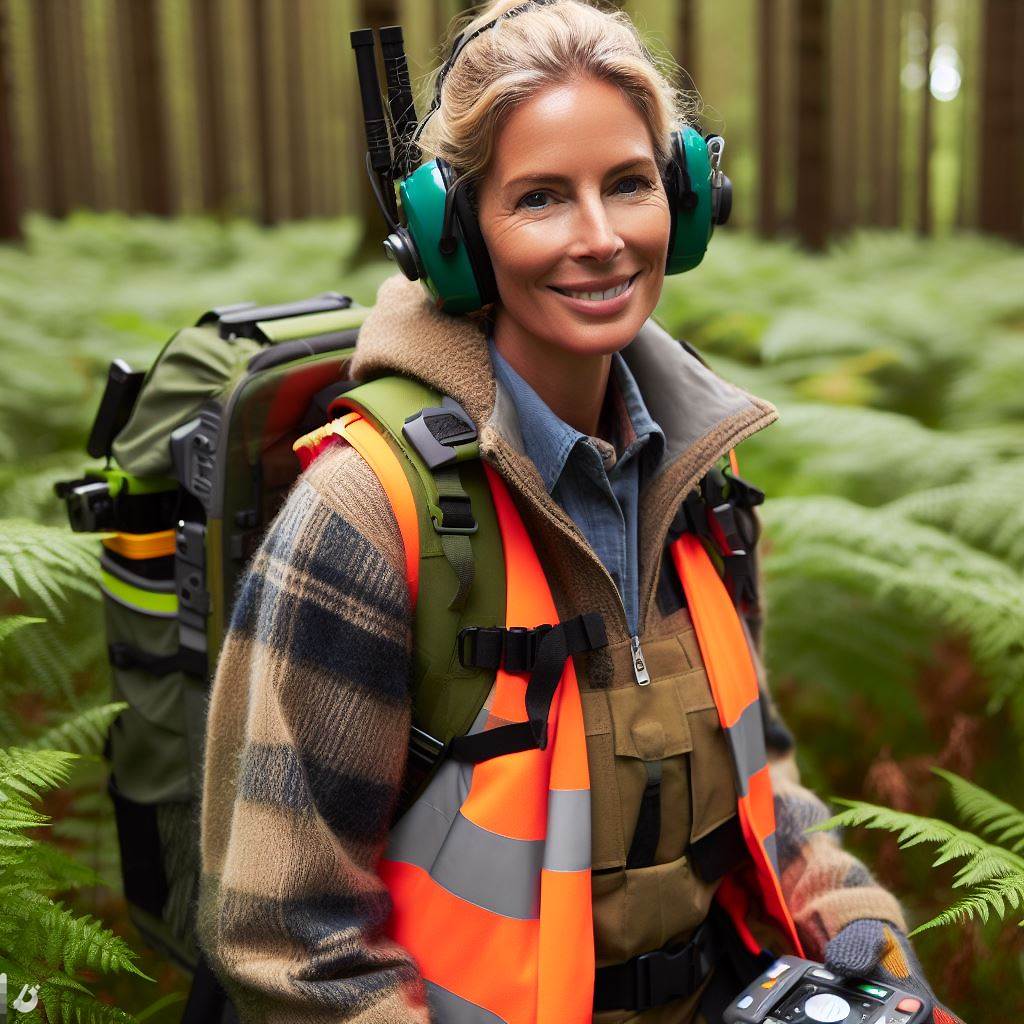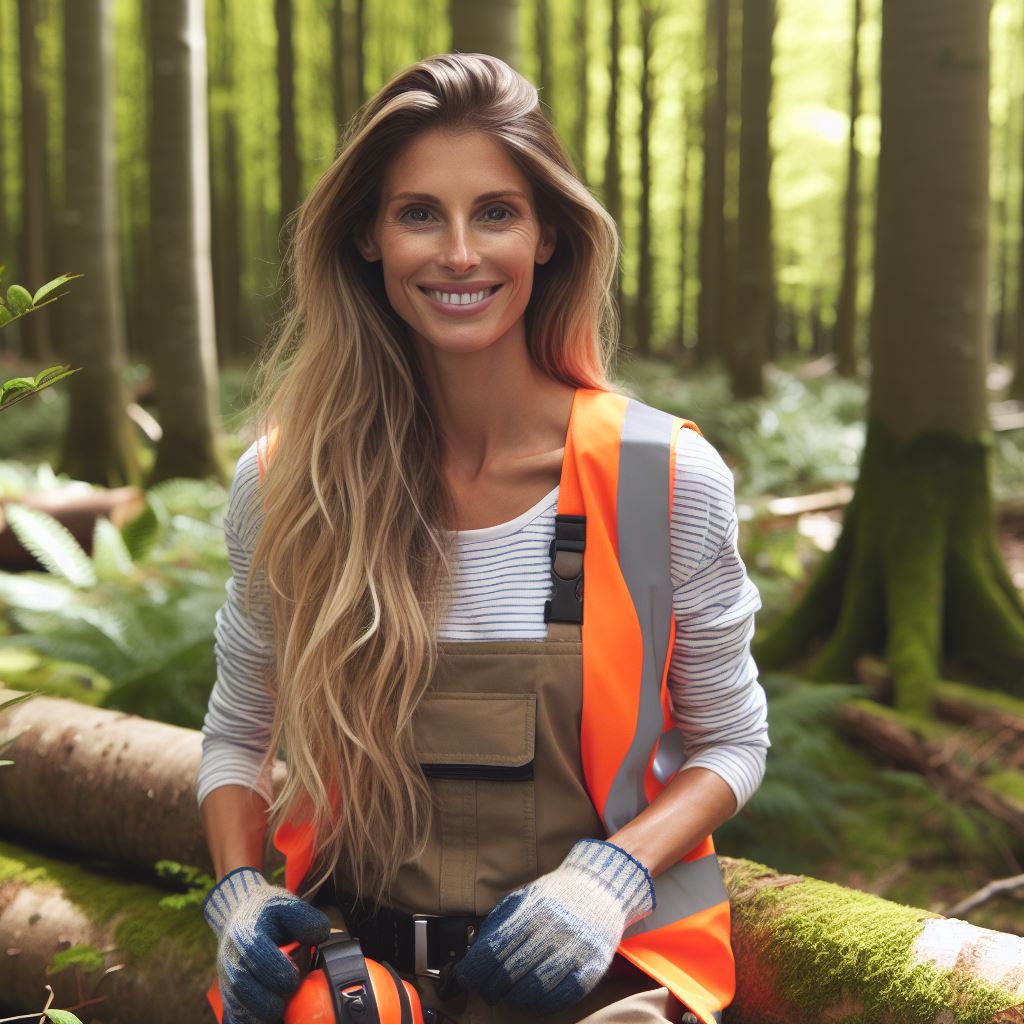Introduction
An arboriculturist is a professional who specializes in the care and management of trees. Trees are vital for the environment and require proper maintenance.
Arboriculturists play a crucial role in ensuring the health and well-being of trees. They are experts in tree biology, disease control, and pruning techniques.
Trees are essential for providing oxygen, reducing air pollution, and controlling water runoff. They also contribute to the beauty and aesthetics of our surroundings.
The maintenance of trees involves various tasks such as pruning, fertilization, pest control, and tree risk assessment. Arboriculturists use their knowledge and skills to ensure that trees remain healthy and safe.
Tree maintenance requires careful planning and consideration of factors such as the species of trees, their age, and the specific site conditions.
Arboriculturists work closely with landscape architects, property owners, and tree care professionals to develop effective tree care plans.
In urban areas, arboriculturists play a crucial role in mitigating the negative impacts of development on trees.
They assess the health and condition of trees, recommend remedial actions, and oversee tree preservation during construction projects.
In essence, arboriculturists are vital in preserving and maintaining the health and beauty of trees.
Their expertise and skills contribute to a sustainable environment and ensure the longevity of our precious tree resources.
Education and Training
Required educational qualifications and degrees
Arboriculturists typically need a bachelor’s degree in forestry, horticulture, or a related field. Some employers may require a master’s degree for advanced positions in arboriculture.
Certification programs, such as the International Society of Arboriculture (ISA) Certified Arborist program, are available. These certification programs validate an arboriculturist’s skills and knowledge in the field.
Training courses and certifications available
Practical experience is crucial in becoming a successful arboriculturist. Many universities and colleges offer hands-on training programs in arboriculture.
These training programs allow students to gain practical experience working with trees. Practical experience helps arboriculturists develop skills in tree planting, maintenance, and management.
It also provides them with the opportunity to learn about different tree species and their needs. Internships or apprenticeships with experienced arborists are highly valuable in gaining practical knowledge.
Personalized UK Career Consulting
Receive tailored career guidance designed just for you. Get actionable steps and expert support to boost your career in 1-3 days. Take control of your career now.
Get StartedDuring these internships or apprenticeships, individuals work alongside professionals and gain hands-on experience.
Individuals can also join arboricultural associations and attend workshops and conferences to enhance their skills.
These associations offer training courses and certifications that are recognized in the industry.
Continuous learning and staying updated with the latest arboricultural practices are essential.
Arboriculturists should attend seminars and webinars to stay informed about advancements in the field.
They should also read industry publications and participate in online forums and discussions. Networking with other arboriculturists and professionals in related fields is beneficial.
Education and training play a vital role in an arboriculturist’s career progression. Required qualifications and degrees provide the foundational knowledge and understanding of arboriculture.
Bachelor’s and master’s degree programs cover subjects like tree biology, plant pathology, and urban forestry.
These programs also emphasize the importance of sustainable tree management and environmental stewardship.
Training courses and certifications further enhance an arboriculturist’s expertise and credibility. Employers often prefer hiring certified arborists as it demonstrates their commitment to professionalism.
Importance of practical experience
Practical experience complements formal education, providing arboriculturists with the necessary skills for the job.
Hands-on training allows them to work directly with trees and learn how to assess their health and needs. Practical experience also teaches arboriculturists about safety procedures and equipment operation.
It provides an understanding of proper pruning, pest control, and tree maintenance techniques.
Arboriculturists with extensive practical experience are more capable of handling complex tree care projects.
Your Dream Job Starts with a Perfect CV
Get a tailored CV and cover letter that captures your unique strengths and stands out in your industry. Let us help you make an unforgettable first impression.
Get StartedThey can accurately diagnose tree problems and develop appropriate strategies for tree preservation and maintenance.
Practical experience also hones an arboriculturist’s communication and problem-solving skills.
It allows them to effectively communicate with clients and educate them about tree care practices.
Ultimately, education, training, and practical experience combine to mold competent and skilled arboriculturists.
As the field of arboriculture continues to evolve, ongoing learning and development should be embraced.
Skills and Knowledge
In order to become an arboriculturist, there are several essential skills and qualities that one must possess:
- Physical stamina and strength to handle the demanding nature of the job.
- Excellent problem-solving skills to assess and address tree-related issues effectively.
- Strong communication skills to interact with clients, colleagues, and other professionals.
- Attention to detail to accurately identify tree species and diagnose diseases.
- Ability to work independently as well as in a team, depending on the task at hand.
- Good organizational skills to plan and prioritize tasks efficiently.
- Knowledge of tree biology, diseases, and pests is crucial for effective arboriculture.
- Understanding of safety procedures and regulations to prevent accidents and injuries.
- Proficiency in operating and maintaining various tree care equipment.
- Experience in climbing and working at heights using appropriate safety gear.
- Ability to analyze soil conditions and provide appropriate treatment for tree health.
- Capability to perform tree pruning, removal, and transplantation with precision.
- Awareness of environmental and conservation principles to promote sustainable tree care.
Arboriculturists also need to continuously update their knowledge and skills through professional development and educational opportunities.
Techniques and best practices in arboriculture evolve over time, necessitating staying up-to-date.
Tree Biology, Diseases, and Pests
Understanding tree biology is fundamental to arboriculture. Arboriculturists should have in-depth knowledge of tree anatomy, growth patterns, and physiological processes.
This understanding enables them to diagnose diseases accurately, identify pests, and prescribe appropriate treatments.
Common tree diseases include fungal infections, viral diseases, and bacterial infections.
Arboriculturists should be able to recognize symptoms, conduct laboratory analysis if necessary, and recommend suitable remedies.
They should also be familiar with preventive measures to minimize the risk of disease spread.
Moreover, arboriculturists require a comprehensive understanding of different pests that can harm trees. Insects, mites, and other organisms can damage tree health and impact overall tree stability.
Identifying these pests helps in implementing effective pest control measures and safeguarding the trees.
Optimize Your LinkedIn for Success
Boost your LinkedIn profile with a professional bio, keyword-rich headline, and strategic recommendations that attract recruiters. Stand out from the crowd and get noticed.
Optimize NowSafety Procedures and Regulations
Arboriculture involves working with heavy machinery, operating at heights, and performing physically demanding tasks.
Therefore, arboriculturists must prioritize safety and adhere to strict procedures to prevent accidents.
They need to be well-versed in safety guidelines and regulations related to tree care operations.
This includes using appropriate personal protective equipment (PPE), ensuring secure tree climbing techniques, employing safe pruning methods, and following proper rigging practices during tree removals.
Furthermore, arboriculturists should have a keen eye for potential hazards in the work environment.
Identifying risks such as unstable tree structures, electrical wires, or nearby buildings is essential to mitigate accidents and protect both themselves and others.
In fact, becoming an arboriculturist requires a combination of skills, knowledge, and dedication.
By possessing essential skills, staying informed about tree biology, diseases, and pests, and following safety protocols, arboriculturists can excel in their profession and contribute to the health and preservation of trees.
Read: Tree Diseases: UK Arborist Perspectives
Getting Started
Arboriculture is a fascinating field that involves the study, management, and care of trees. If you are interested in pursuing a career as an arboriculturist, there are several steps you can take to get started.
Gain Experience
One of the best ways to gain experience in arboriculture is through volunteering or internships.
Many organizations, such as local parks or conservation groups, rely on volunteers to help with tree care and maintenance.
By volunteering your time, you can learn valuable skills and gain hands-on experience in the field.
Join Professional Organizations
Another great way to get started in arboriculture is by joining professional organizations. These organizations can provide you with networking opportunities, educational resources, and access to industry events.
Some popular professional organizations for arboriculturists include the International Society of Arboriculture (ISA) and the Tree Care Industry Association (TCIA).
Network
Networking is essential in any field, including arboriculture. Attend industry conferences, workshops, and seminars to meet professionals in the field.
Building connections with experienced arboriculturists can provide mentorship opportunities and open doors to potential job opportunities in the future.
Seek Mentorship
Finding a mentor who is already established in the field can be invaluable. A mentor can provide guidance, advice, and support as you navigate your path to becoming an arboriculturist.
Reach out to professionals in your area or through professional organizations to find a mentor who can help you grow in your career.
In short, if you want to become an arboriculturist, there are several steps you can take to get started.
Gain experience through volunteering or internships, join professional organizations, network with industry professionals, and seek mentorship opportunities.
By following these steps, you can begin your journey towards a rewarding career in arboriculture.
Read: Aquatic Health Management by UK Experts

Learn More: Urban Forestry: The Future in Cities
Career Opportunities
Arboriculturists can pursue various career paths, such as tree surgeon, urban forestry consultant, or tree risk assessor.
Arboriculture offers a wide range of career opportunities for individuals who are passionate about trees and the environment.
Whether you aspire to be a tree surgeon, urban forestry consultant, or tree risk assessor, the field has something for everyone.
Let’s explore the different career paths within arboriculture and the job prospects and salary expectations associated with each.
One of the most common career paths in arboriculture is that of a tree surgeon.
Tree surgeons are responsible for the maintenance and care of trees, which includes pruning, felling, and planting.
They ensure that trees are healthy, properly shaped, and pose no risk to the surrounding environment.
Tree surgeons often work in both urban and rural settings, serving residential, commercial, and municipal clients.
Another career option within arboriculture is becoming an urban forestry consultant.
Urban forestry consultants work to manage and preserve trees in an urban environment, taking into account factors such as air quality, water management, and green space planning.
They advise government agencies, developers, and property owners on tree selection, planting, and maintenance techniques to enhance the environmental and aesthetic aspects of urban areas.
For those interested in assessing the risks associated with trees, a career as a tree risk assessor might be the right fit.
Tree risk assessors evaluate trees for potential hazards and determine the level of risk they pose to people and property.
Their expertise helps prevent accidents and ensures the safety of trees in public spaces such as parks, schools, and highways.
Job prospects for arboriculturists are promising, with the field expected to grow by 10% in the next decade.
When it comes to job prospects, the arboriculture field is expected to grow by 10% over the next decade.
This growth can be attributed to the expanding awareness of the benefits that trees provide, such as carbon sequestration, shade, and improved air quality.
As urban areas continue to develop, the need for skilled arboriculturists who can manage and preserve trees becomes crucial.
Salary expectations for arboriculturists vary depending on experience, qualifications, and location, but it can be lucrative.
In terms of salary expectations, arboriculturists can earn a considerable income. However, salaries can vary depending on factors such as experience, qualifications, and location.
Senior arboriculturists or those with specialized knowledge and certifications often earn higher incomes.
Moreover, working in urban areas or regions with a high demand for arboriculturists can also lead to better salary opportunities.
The demand for arboriculturists in the UK is rapidly increasing due to the emphasis on environmental conservation and urban greening.
In the UK, the demand for arboriculturists is growing rapidly.
With the increasing emphasis on environmental conservation and urban greening.
Local authorities, government organizations, and private companies are actively seeking arboriculturists to manage and maintain green spaces.
As a result, the job market for skilled arboriculturists continues to expand, providing numerous employment opportunities.
In short, arboriculture offers a diverse range of career opportunities for individuals passionate about working with trees.
Whether you choose the path of a tree surgeon, urban forestry consultant, or tree risk assessor, the field promises fulfilling work and prospects for growth.
With the growing demand for arboriculturists in the UK, now is an ideal time to embark on a career in this dynamic field.
Read: Essential Tools for Modern Arboriculture
You Might Also Like: A Day in the Life of a UK Agricultural Manager
Challenges and Rewards: The Path to Becoming an Arboriculturist
Physical Demands and Risks Associated with the Profession
- Working as an arboriculturist requires immense physical strength and endurance.
- Climbing tall trees, often with heavy equipment, poses risks to personal safety.
- Operating chainsaws and other tools necessitates adherence to strict safety protocols.
- Dealing with unpredictable weather conditions such as strong winds and extreme temperatures is common.
- Exposure to harmful chemicals used in tree care may result in health hazards.
In the pursuit of becoming an arboriculturist, individuals face numerous challenges that are outweighed by the rewarding aspects of the profession.
The physical demands and risks associated with the job cannot be overlooked. Arboriculturists often find themselves engaging in physically demanding tasks, requiring immense strength and endurance.
Climbing tall trees, sometimes equipped with heavy machinery, poses risks that require meticulous attention to personal safety.
Moreover, operating chainsaws and other tools necessitates strict adherence to safety protocols to mitigate potential accidents.
Adverse weather conditions, including strong winds and extreme temperatures, frequently challenge arboriculturists, who must adapt and perform their duties regardless of the circumstances.
Additionally, exposure to chemicals used in tree care may pose health hazards and necessitate precautions.
The Satisfaction of Preserving and Maintaining Trees
- Arboriculturists experience fulfillment in contributing to the preservation and wellbeing of trees.
- Expert care ensures that trees remain healthy, promoting longevity and sustainability.
- Witnessing the growth and development of trees over time brings a sense of accomplishment.
- Contributing to the overall beauty and aesthetic appeal of landscapes is gratifying.
- Understanding the important role that trees play in the environment is intellectually stimulating.
However, the rewards of the arboriculture profession far exceed the challenges. Arboriculturists derive intense satisfaction from preserving and maintaining trees.
By caring for trees expertly, they contribute to their overall health and promote longevity, ensuring the sustainability of green spaces.
Witnessing the growth and development of trees over time brings a profound sense of accomplishment and fulfillment.
Furthermore, the impact on the aesthetic appeal of landscapes is another gratifying aspect of the profession.
Arboriculturists appreciate the intrinsic beauty provided by trees and the positive influence they have on the environment.
Opportunities for Personal and Professional Growth
- Arboriculture offers diverse opportunities for specialization, allowing individuals to develop expertise in specific areas.
- Continuous learning and staying updated with the latest research and techniques keep arboriculturists at the forefront of the field.
- Networking with professionals in related industries enhances career prospects and fosters knowledge exchange.
- Participation in workshops, conferences, and seminars facilitates skills enhancement and professional development.
- Advancement opportunities exist, ranging from supervisory roles to owning a tree care business.
Becoming an arboriculturist opens doors to personal and professional growth.
The field offers a wide array of specialization opportunities, allowing individuals to develop expertise in specific areas of tree care, such as urban forestry or tree risk assessment.
Continuous learning is essential for staying at the forefront of the industry. Arboriculturists must remain updated with the latest research, techniques, and equipment.
Connecting with professionals in related industries through networking provides valuable insights, enhances career prospects, and fosters knowledge exchange.
Workshops, conferences, and seminars offer platforms for skills enhancement and professional development.
Arboriculturists may further advance their careers, progressing from entry-level roles to positions of supervision or even owning their own tree care businesses.
In summary, the path to becoming an arboriculturist is one filled with both challenges and rewards.
The physical demands and risks associated with the profession require resilience, adaptability, and a commitment to safety.
However, the satisfaction derived from preserving and maintaining trees, along with the opportunities for personal and professional growth, make arboriculture a truly fulfilling field to pursue.
Read: Aquaculture Equipment Essentials in the UK
Conclusion
Throughout this blog section, we have explored the path to becoming an arboriculturist and the necessary steps to take. It is a career that requires dedication, passion, and continuous learning.
By beginning with a foundation in biology and horticulture, aspiring arboriculturists can then acquire practical experience through internships and apprenticeships.
Gaining certifications in arboriculture is essential to furthering one’s career and demonstrating expertise in the field.
Furthermore, developing strong communication and problem-solving skills will help arboriculturists succeed in their profession.
Collaborating with other professionals, such as landscape architects and arborists, can provide valuable networking opportunities and expand one’s knowledge.
As we wrap up this section, I encourage those interested in nature and conservation to consider a fulfilling career in arboriculture.
The satisfaction that comes from caring for and preserving trees is unmatched.
Lastly, it is crucial to recognize the importance of promoting tree care and conservation.
Trees are not only aesthetically pleasing, but they also play a vital role in maintaining a sustainable future.
By educating others about the value of trees and the benefits they provide to our environment, we contribute to the well-being of our planet and future generations.
So, let us embark on this exciting journey together, working towards a greener and healthier world, one tree at a time.
[E-Book for Sale]
500 Cutting-Edge Tech Startup Ideas for 2024 & 2025: Innovate, Create, Dominate
$19.99 • 500 Tech Startup Ideas • 62 pages
You will get inspired with 500 innovative tech startup ideas for 2024 and 2025, complete with concise descriptions to help you kickstart your entrepreneurial journey in AI, Blockchain, IoT, Fintech, and AR/VR.




